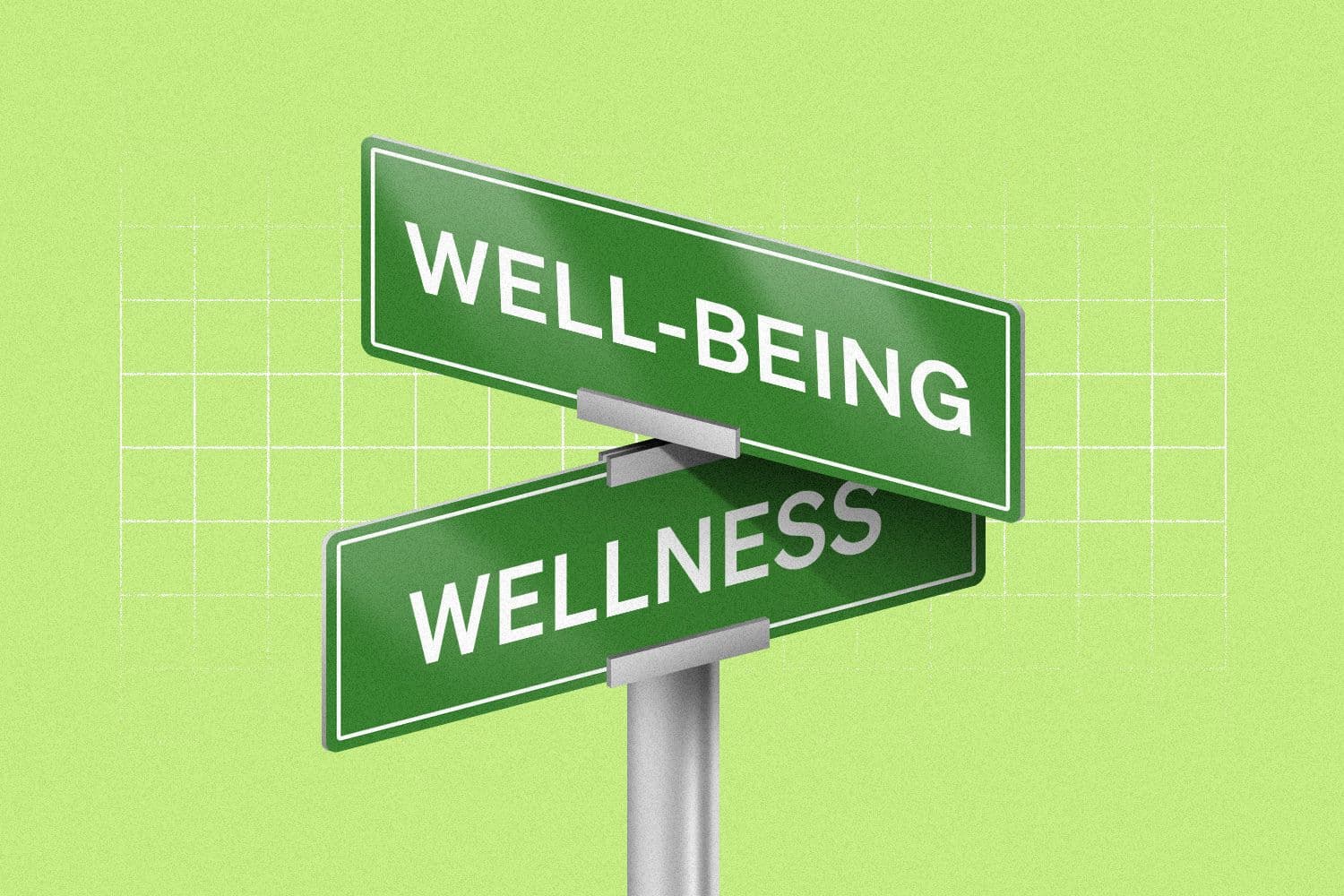Creating a well-being and wellness strategy should be your next HR priority
A chief people officer shares how to build a framework for both—and yes, there’s a difference.

Francis Scialabba
• 4 min read
Mikaela Cohen is a reporter for HR Brew covering workplace strategy.
Do you know the difference between well-being and wellness?
While the definitions may vary depending on the organization, well-being is an employee’s overall health—financial, physical, mental, and social, as well as in their community and at work, according to Learning Dimensions Network, an Australia-based education consulting firm.
Wellness describes what an employee might do to contribute to each of those areas, like exercise for physical wellness and meditation for mental wellness, Evelina Dzimanaviciute, an organizational development and well-being consultant, told HR Zone. Effective wellness programs can help HR increase employee engagement, morale, culture, and more, according to Workhuman.
Whereas “well-being is a broader frame,” said Melanie Langsett, a rewards, recognition, and well-being leader at Deloitte. “If you really are thinking about the well-being of your workforce, you have to think about the way you organize work, design work, and the way that work is executed.”
Here, a chief people officer offers strategies for creating best practices for both well-being and wellness.
Roads need to collide. Now that you’ve cleared the first hurdle of defining well-being and wellness, the next step is centralizing your company’s info for employees.
“There are segmentations going on in the workplace,” said Greg Hill, chief people officer, at Exos, a corporate wellness company that runs workplace well-being programs.
Hill told HR Brew that he has seen companies offer well-being and wellness as a benefit (like gym reimbursements), as a learning and development opportunity (like educational stipends), and as a company policy (like org-wide summer vacations). The scatteredness and jumbled definitions can confuse employees.
Hill said HR teams need to define wellness and well-being and share all of the related resources in one place. He suggested starting with employee resource groups, where workers likely already have a level of comfortability.
“How are [you] incorporating this conversation into that conversation?” he said. “For us, our employee resource groups play a huge role in our well-being practices, and quite frankly, they talk about it and coach more than probably HR teams do on a daily and weekly basis.”
Be authentic. A framework for well-being and wellness needs to be authentic and align with the rest of a company’s initiatives.
“Organizations are all over the place—working from home, hybrid, and everything in between—so make [well-being and wellness] authentic by saying, ‘In our organization, here’s some examples of how well-being can come to life in your typical day.’” Hill said. “Being authentic…is still a work-in-progress for many.”
One way Exos promotes authentic best practices is by offering employees access to “performance coaches,” who are available to all Exos employees for well-being and wellness needs. “We’re a coaching company…We have coaches dedicated to our organization as if we were a client,” Hill said.
Promotion versus permission. With a framework in place, the next step is to execute. This is where many companies miss the mark by giving employees permission to access programs, rather than promoting the impact, Hill said.
“A lot of organizations are saying, ‘You can do this, Greg.’ As opposed to, ‘We expect you to do this in the ways that work for you, and here are the examples in which we are doing it and look for you to do it,’” Hill said.
While executives should role model well-being, Hill said, it can be effective to have employees do the same. HR pros can encourage employees to share what well-being and wellness means to them and how they’re using company resources to achieve their goals.
“[Well-being and wellness] really has to be embedded in the way you think about everything that you do, whether you have 30 people or 300,000,” Langsett said. “It’s actually designed into the way we think about work, because you can’t work 12 hours a day, and then go do exercise on the side, and say that you’re well.”
Quick-to-read HR news & insights
From recruiting and retention to company culture and the latest in HR tech, HR Brew delivers up-to-date industry news and tips to help HR pros stay nimble in today’s fast-changing business environment.